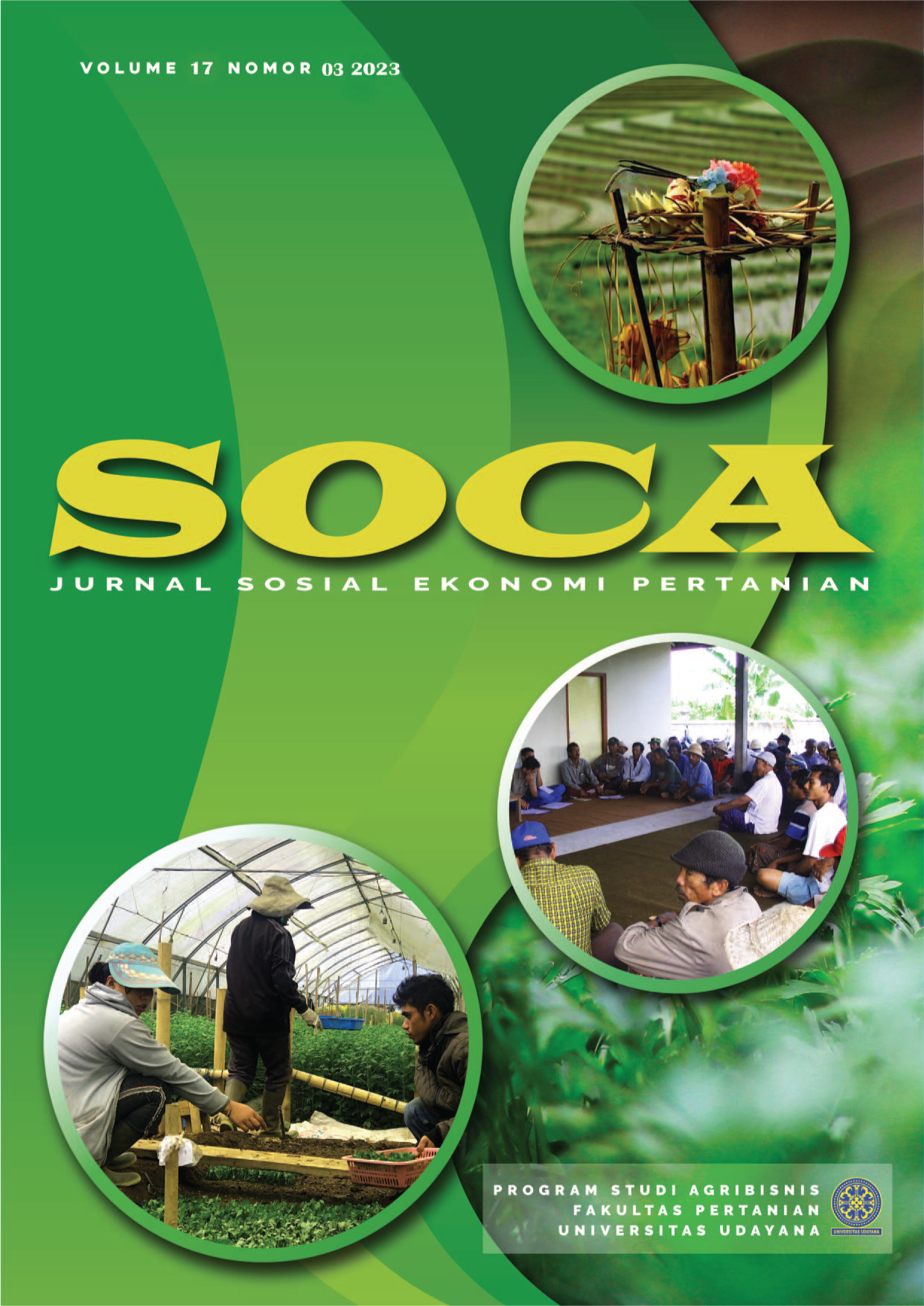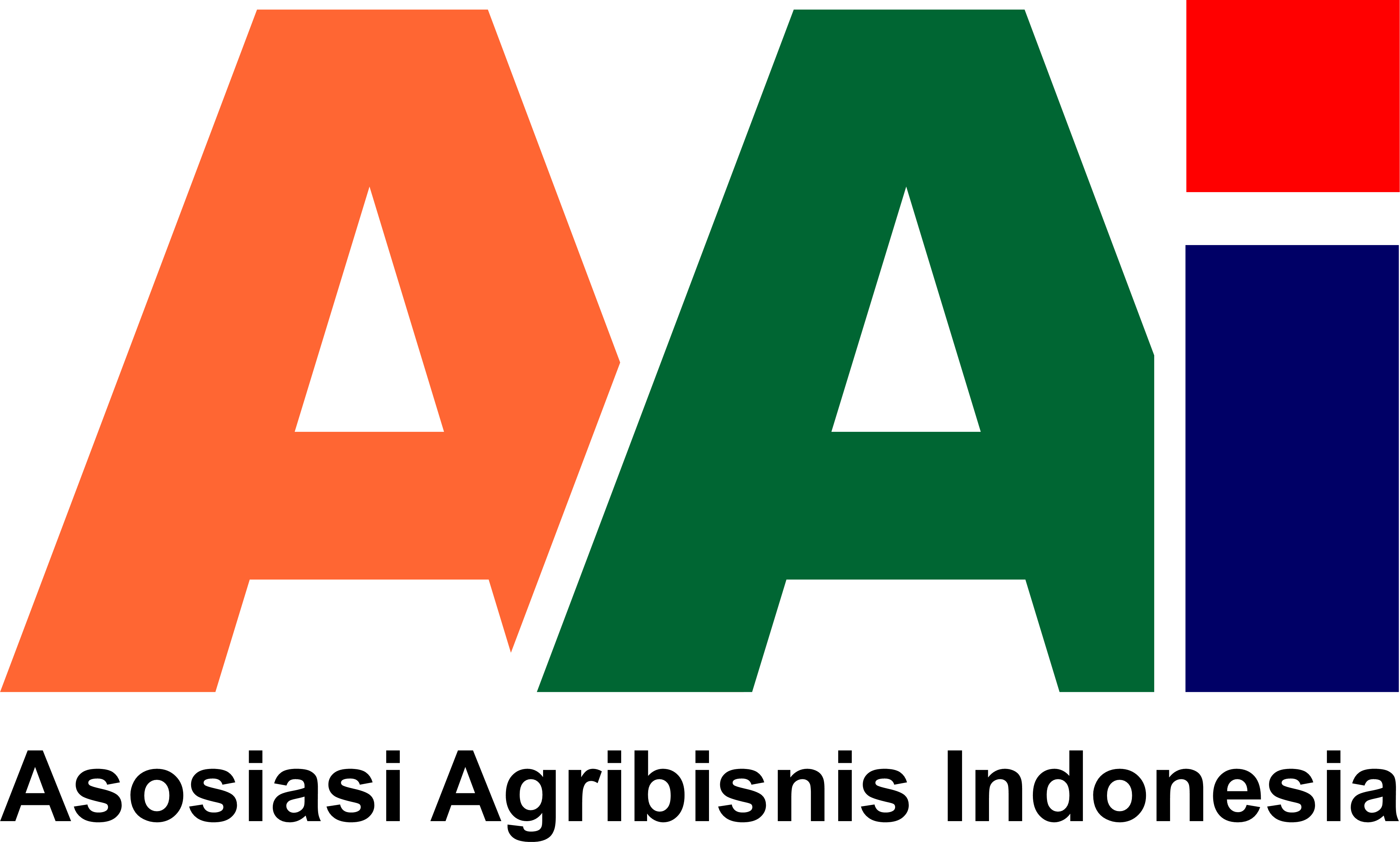The Performance of Existing Rice Farming on Peatlands in Central Kalimantan Food Estate Area
Abstract
Peatland is tidal wetland that has the potential to be utilized for rice farming. This study aims to identify the characteristics of farmers and rice farming performance, and analyze the feasibility of rice farming on peatlands in the Food Estate area, Central Kalimantan. The research was conducted in Kapuas and Pulang Pisau districts, Central Kalimantan, in 2020. Primary data were obtained through interviews with 180 farmers purposively selected as research respondents. Farmers’ characteristics and rice farming performance were analyzed using descriprive qualitative and quantitative approaches. The feasibility of rice farming was analyzed using RC ratio. The results showed that in general, the farmers were productive with a long experience of rice farming despite low education. Land ownership is quite extensive with self-owned status. Farmers in Kapuas district used hybrid and labeled rice seeds (85.87%), while in Pulang Pisau district the seeds used were inbred and only 42.86% were labeled. The farmers also used inorganic fertilizer, organic fertilizer, lime, herbicides and pesticides. Rice farming on peatlands in the Food Estate area of Central Kalimantan is feasible with RC > 1. Rice farming on peatlands should be widely developed to support the increase in national rice production, in line with the increasing demand for rice
Downloads
References
Adri, Firdaus, Suharyon, & Yardha. (2013). Kabupaten Tanjung Jabung Timur. Jurnal Sosio Ekonomika, 16(1), 100–108. https://doi.org/doi:10.22437/jiseb.v16i1.2773.
Agustiani, W. N., & Ruskandar, A. (2019). Peningkatan pendapatan petani padi rawa pasang surut melalui penerapan teknologi RAISA di Sumatera Selatan. Jurnal Agroswagati, 7(2), 122–127. https://doi.org/http://dx.doi.org/10.33603/agroswagawati.v6i2.
Agwu, A. E., Ekwueme, J. N., & Anyanwu, A. C. (2008). Adoption of improved agricultural technologies disseminated via radio farmer programme by farmers in Enugu State, Nigeria. African Journal of Biotechnology, 7(9), 1277–1286. https://doi.org/10.4314/ajb.v7i9.58662
Baumgart-Getz, A., Prokopy, L. S., & Floress, K. (2012). Why farmers adopt best management practice in the United States: A Meta-analysis of the adoption literature. Journal of Environmental Management, 96, 17–25. https://doi.org/10.1016/j.jenvman.2011.10.006
BPS Kalimantan Tengah. (2020). Provinsi Kalimantan Tengah dalam angka 2020.
Darsani, Y. R., Anwar, K., & Saleh, M. (2021). Kelayakan teknis dan sosial ekonomi penggunaan biotara pada usaha tani padi di lahan rawa pasang surut. Jurnal Penelitian Pertanian Tanaman Pangan, 5(3), 195–202. https://doi.org/10.21082/jpptp.v5n3.2021.p195-202
Daryono, H. (2009). Potensi, permasalahan dan kebijakan yang diperlukan dalam pengelolaan hutan dan lahan rawa gambut secara lestari. Jurnal Analisis Kebijakan Kehutanan, 6(2), 71–101. https://doi.org/https://doi.org/10.20886/jakk.2009.6.2.%25p.
Dohong, A., Aziz, A. A., & Dargusch, P. (2017). A review of the drivers of tropical peatland degradation in South-East Asia. Land Use Policy, 69, 349–360. https://doi.org/10.1016/j.landusepol.2017.09.035
Ghimire, R., Huang, W. C., & Shrestha, R. B. (2015). Factors affecting adoption of improved rice varieties among rural farm households in Central Nepal. Rice Science, 22(1), 35–43. https://doi.org/10.1016/S1672-6308(14)60278-X
Hidayah, H., Suyatno, A., & Kurniati, D. (2021). The Competitiveness analysis of corn farming on peatland. SOCA: Jurnal Sosial Ekonomi Pertanian, 15(3), 470–481. https://doi.org/10.24843/soca.2021.v15.i03.p05
Imanudin, M. S., Sulistiyani, P., Armanto, M. E., Madjid, A., & Saputra, A. (2021). Land suitability and agricultural technology for rice cultivation on tidal Lowland reclamation in South Sumatra. Jurnal Lahan Suboptimal : Journal of Suboptimal Lands, 10(1), 91–103. https://doi.org/10.36706/jlso.10.1.2021.527
Isnaini, A. E., Supardi, S., & Agustono, A. (2021). Demand and willingness to pay for rice commodities in West Java. SOCA: Jurnal Sosial, Ekonomi Pertanian, 15(1), 178–188. https://doi.org/10.24843/soca.2021.v15.i01.p16
Januar, R., Sari, E. N. N., & Putra, S. (2021). Dynamics of local governance: The case of peatland restoration in Central Kalimantan, Indonesia. Land Use Policy, 102, 1–13. https://doi.org/10.1016/j.landusepol.2020.105270
Kusnadi, H., Fauzi, E., Ishak, A., Firizon, J., Eka Putra, W., Riset dan Inovasi Nasional, B., & Pertanian Kabupaten Bengkulu Selatan, D. (2022). Produktivitas padi di lahan rawa dengan kapur dolomit. Jurnal Pertanian, 13(2), 47–53. https://doi.org/https://doi.org/10.30997/jp.v13i2.5548
Mariano, M. J., Villano, R., & Fleming, E. (2012). Factors influencing farmers’ adoption of modern rice technologies and good management practices in the Philippines. Agricultural Systems, 110, 41–53. https://doi.org/10.1016/j.agsy.2012.03.010
Masganti, M. (2021). Peningkatan Produktivitas Padi Di Provinsi Riau Melalui Perbaikan Sistem Tanam. Al Ulum Sains Dan Teknologi, 6(2), 84–94. https://doi.org/10.31602/ajst.v6i2.5219
Mulyono, J., Hadi, S., & Munibah, K. (2016). Improved profits and wetland paddy farming scale as the leading commodity in agroecological zones. Jurnal Ekonomi Pembangunan: Kajian Masalah Ekonomi Dan Pembangunan, 17(1), 15–27. http://journals.ums.ac.id. doi: 10.23917/jep.v17i1.1691
Nazeb, A., Darwanto, D. H., & Suryantini, A. (2019). Efisiensi alokatif usahatani padi pada lahan gambut di Kecamatan Pelalawan, Kabupaten Pelalawan, Riau. Jurnal Ekonomi Pertanian Dan Agribisnis, 3(2), 267–277. https://doi.org/10.21776/ub.jepa.2019.003.02.5
Osaki, M., Nursyamsi, D., Noor, M., Wahyunto, & Segah, H. (2016). Peatland in Indonesia. Tropical Peatland Ecosystems. https://doi.org/10.1007/978-4-431-55681-7_3
Purba, K. F., Yazid, M., Hasmeda, M., Adriani, D., & Tafarini, M. F. (2020). Technical efficiency and factors affecting rice production in tidal lowlands of South Sumatra Province Indonesia. Potravnarstvo Slovak Journal of Food Sciences, 14, 101–111. https://doi.org/https://doi.org/10.5219/1287
Ritung, S., & Sukarman. (2014). Lahan gambut Indonesia ( Pembentukan, karakteristik, dan potensi mendukung ketahanan pangan): kesesuaian lahan gambut untuk pertanian (Edisi Revi). IAARD Press.
Sholikah, S., & Kadarmanto, K. (2020). The Analysis of technical efficiency of inbred and hybrid lowland rice farming business. SOCA: Jurnal Sosial Ekonomi Pertanian Ekonomi Pertanian, 14(3), 381–397. https://doi.org/10.24843/soca.2020.v14.i03.p01
Sumarno, J., Harianto, H., & Kusnadi, N. (2015). Peningkatan produksi dan efisiensi usahatani jagung melalui penerapan pengelolaan tanaman terpadu (PTT) di Gorontalo. Jurnal Manajemen Dan Agribisnis, 12(2), 79–91. https://doi.org/10.17358/jma.12.2.79
Surahman, A., Shivakoti, G. P., & Soni, P. (2017). Prospect of sustainable peatland agriculture for supporting food security and mitigating green house gas emission in Central Kalimantan, Indonesia. Redefining Diversity and Dynamics of Natural Resources Management in Asia, 1, 291–303. https://doi.org/10.1016/B978-0-12-805454-3.00015-3
Surahman, A., Soni, P., & Shivakoti, G. P. (2018a). Are peatland farming systems sustainable? Case study on assessing existing farming systems in the peatland of Central Kalimantan, Indonesia. Journal of Integrative Environmental Sciences, 15(1), 1–19. https://doi.org/10.1080/1943815X.2017.1412326
Surahman, A., Soni, P., & Shivakoti, G. P. (2018b). Reducing CO2 emissions and supporting food security in Central Kalimantan, Indonesia, with improved peatland management. Land Use Policy, 72, 325–332. https://doi.org/10.1016/j.landusepol.2017.12.050
Susanti, M. A., & Mamat, H. . (2017). Sustainability status of technology application on rice farming in peatlands (case study at Kanamit Jaya village, Central Kalimantan). Journal of Wetlands Environmental Management, 5(1), 44–55. https://doi.org/10.20527/jwem.01.01.02
Susilawati, A., Nursyamsi, D., & Syakir, M. (2016). Optimalisasi penggunaan lahan rawa pasang surut mendukung swasembada pangan nasional. Jurnal Sumberdaya Lahan, 10(1), 51–64. https://doi.org/10.2018/jsdl.v10i1.6211
Takahashi, K., & Barrett, C. B. (2013). The system of rice intensification and its impacts on household income and child schooling: Evidence from rural Indonesia. American Journal of Agricultural Economics, 96(1), 269–289. https://doi.org/10.1093/ajae/aat086
Utami, S. N. H., Maas, A., Radjagukguk, B., & Purwanto, B. H. (2009). Sifat fisik, kimia dan FTIR spektrofotometri gambut hidrofobik Kalimantan Tengah. Journal of Tropical Soils, 14(2), 159–166. https://doi.org/10.5400/jts.v14i2
Wardie, J., & Sintha, T. Y. E. (2018). The Sustainability level of the rice farming in the peatland at the Kapuas Regency, Central Kalimantan. Journal of Socioeconomics and Development, 1(1), 38–42. https://doi.org/10.31328/jsed.v1i1.531













